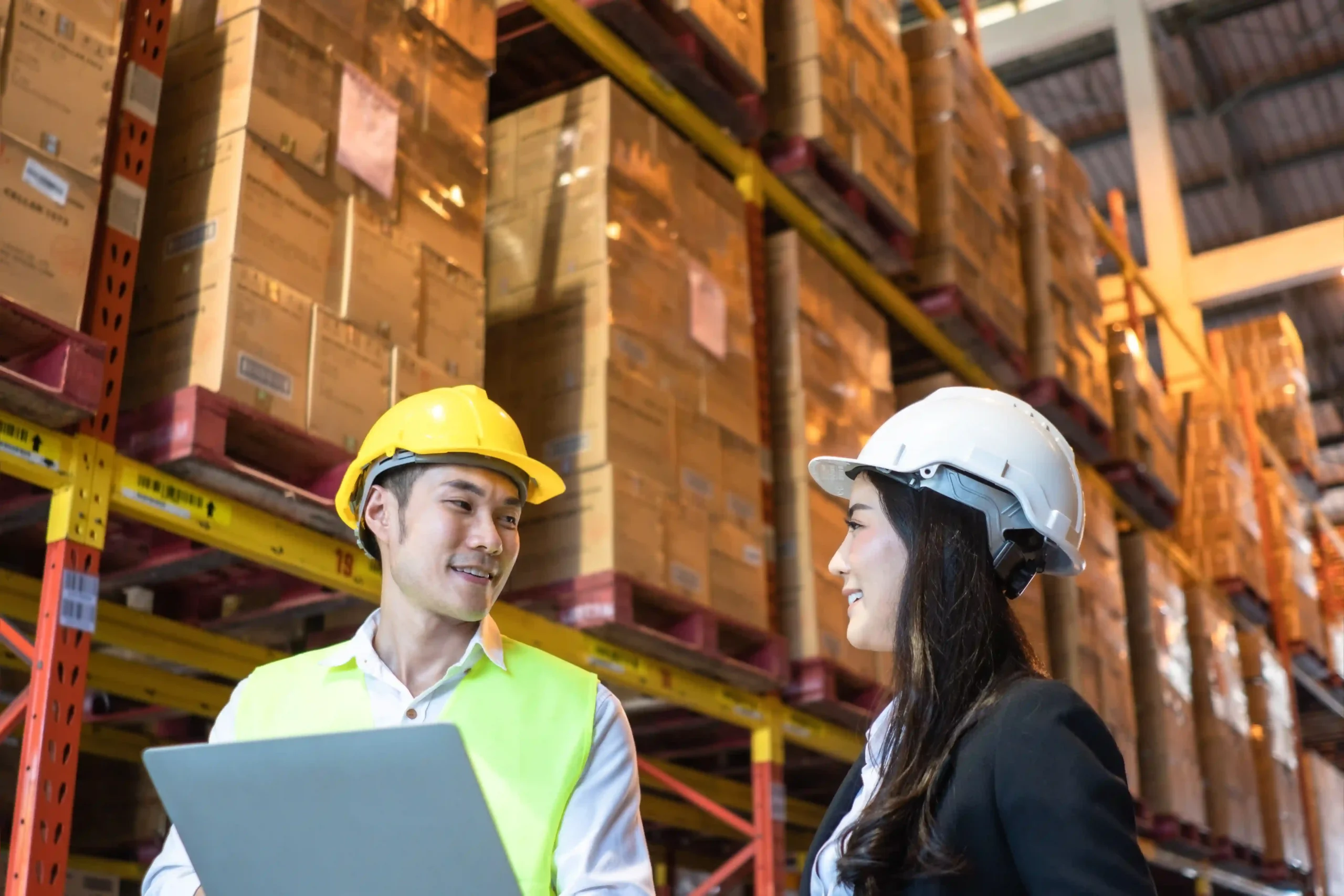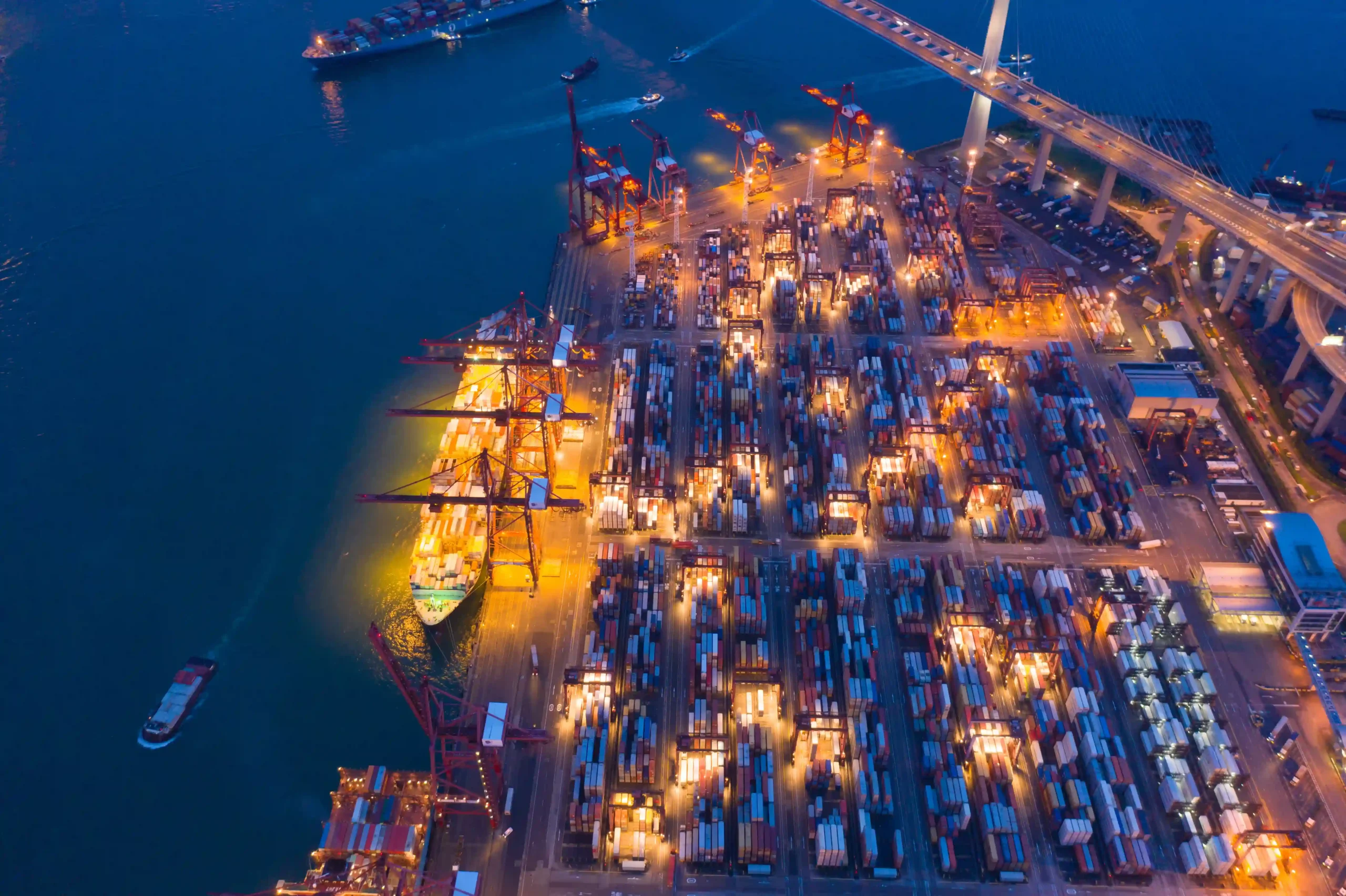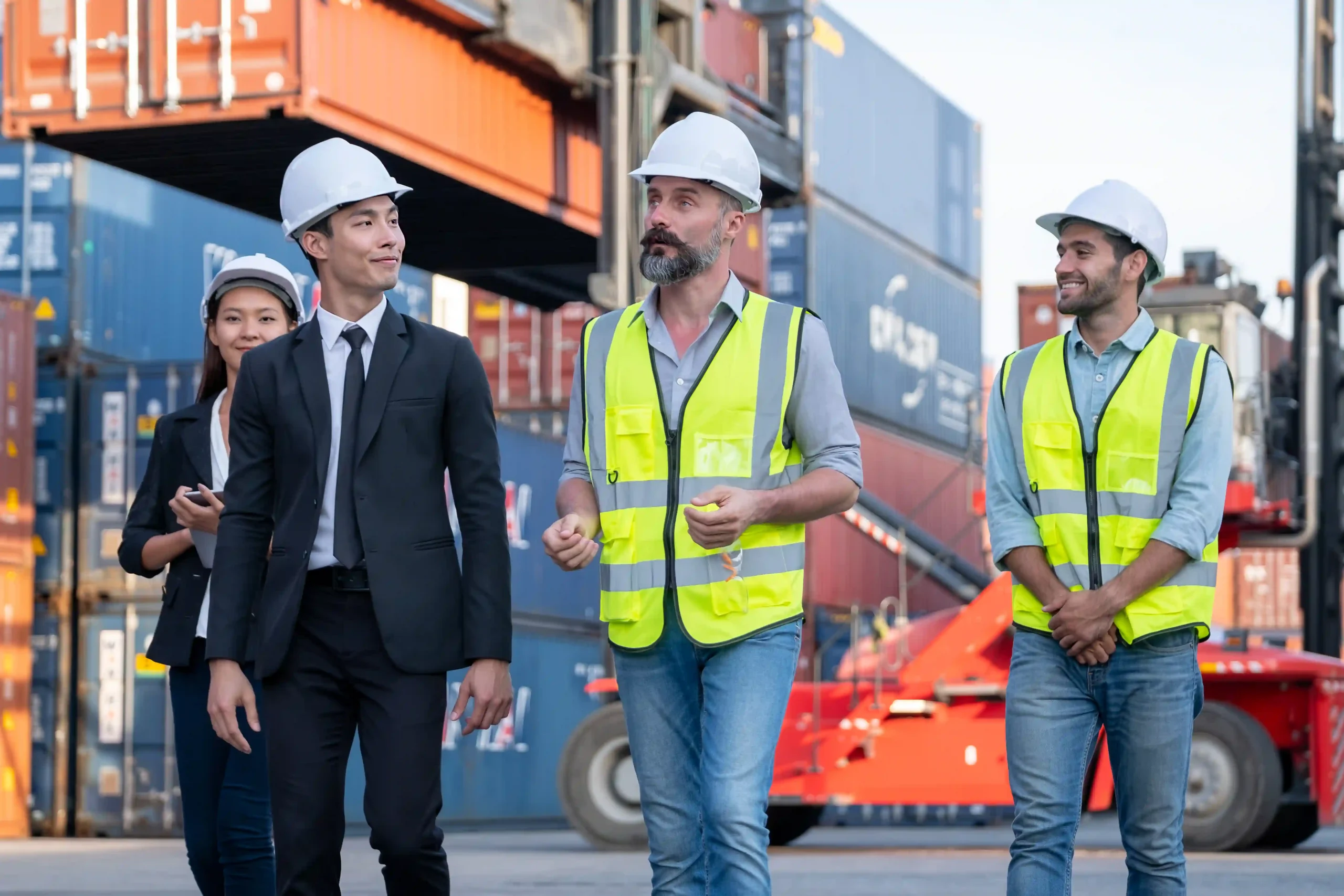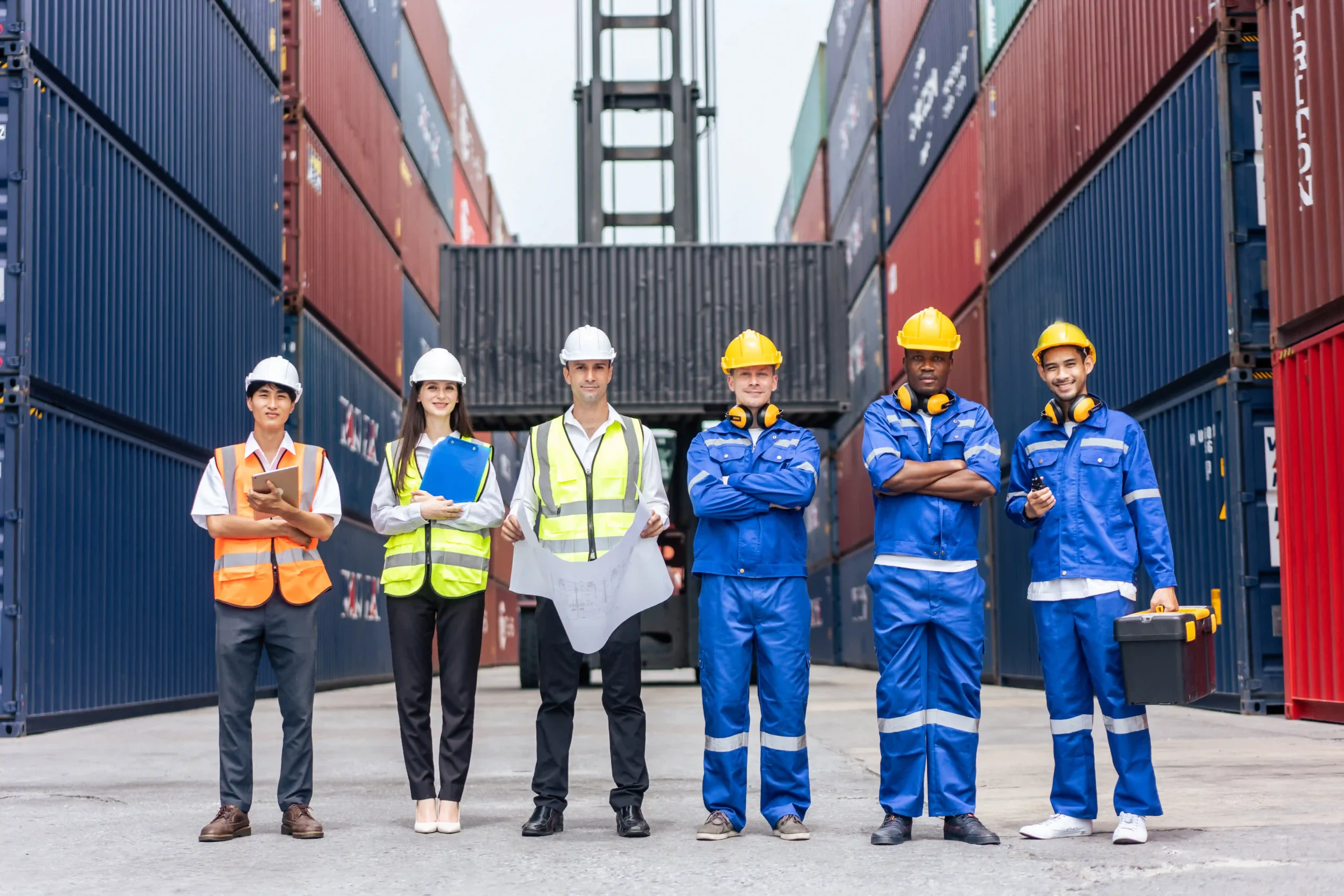In simple terms, the 3PL logistics process is how a third-party logistics provider (like us here at Tri-Link FTZ) takes over the operational side of your supply chain. That includes receiving your inventory, storing it, picking and packing orders, shipping them out, and handling returns when needed.
Our job is to make sure your goods move efficiently from warehouse shelf to customer doorstep while helping you scale your business without the growing pains. Over the past 35 years, I’ve watched companies transform when they let go of doing it all themselves.
I’ve been in the warehouses, seen the pallets get offloaded, and sat across from stressed-out founders who just wanted their orders shipped faster. The moment we show them what a refined 3PL logistics process looks like, their shoulders drop — relief sets in.
They realize logistics doesn’t have to be their pain point. Let’s walk through this process the way we live it every day at Tri-Link FTZ.

Every successful 3PL partnership starts with this — we receive your goods. It’s not just about unloading boxes. It’s about getting it right from the start.
Each shipment that arrives is checked against your packing slip or bill of lading. Is the count accurate?
Are any items damaged? This is where we catch costly errors before they affect your customers.
I’ve had clients tell me horror stories of boxes showing up missing half the product. That’s why we treat this step seriously.
Our team uses digital tracking and WMS systems to log every item received. Once in our system, your products are labeled, barcoded, and assigned a specific place in our storage system.
You have real-time access to what’s in — and what’s still in transit. This level of precision avoids stockouts and surprises.
And trust me, nothing tanks a sales campaign like not having product ready to ship.
Now that we’ve got your goods, we store them safely and smartly. Our warehouse isn’t just a storage unit — it’s a living, breathing operation.
Inventory is placed based on movement frequency, size, and handling needs. If your product is fragile, perishable, or oversized, we take that into account.
When a client sells nutritional supplements, we make sure everything is climate-controlled. For someone else with large fitness equipment, we position it for easy forklift access.
No two inventories are stored the same way — and that’s what makes our 3PL logistics process adaptable to almost any business. Everything is logged in our system, and you can see real-time inventory levels through our client dashboard.
This helps you make smart restocking decisions and ensures your ecommerce store reflects accurate stock availability.
This is where logistics gets fast and furious. When an order comes in, our warehouse management system generates a pick list that routes our staff to the right bins, shelves, or pallets.
We use handheld scanners to reduce human error. If you’ve ever had a customer get the wrong size or product, you know how costly that mistake can be. Packing is where the customer experience starts.
We let clients customize their packing materials, include inserts, or even add personalized gift notes. One apparel brand we work with includes handwritten thank-you cards — and yes, we make that happen.
Whether it’s eco-friendly packaging or branding the box with your colors, this is your chance to stand out from competitors. Here’s a quick look at common packing options:
Material | Use Case | Extra Branding Option |
Corrugated Boxes | Standard orders | Branded print available |
Poly Mailers | Soft goods/apparel | Logo stickers |
Bubble Wrap | Fragile items | Custom tape |
Kraft Paper | Eco-focused brands | Recyclable messaging inserts |
Packing isn’t just stuffing boxes — it’s product presentation. That’s why we take the time to do it right.

Getting orders out the door is a race against time — and our goal is always next-level speed. At Tri-Link FTZ, we strategically work with top carriers, negotiating rates so you get the best deal possible.
Depending on where your customers are, we ship from the warehouse closest to them. This distributed shipping model cuts down on delivery times and shipping costs.
With our systems, your customers automatically receive tracking info once a package is out the door. That builds trust and minimizes “where is my order?” emails.
Our average fulfillment speed allows us to reach over 90% of the U.S. within 2 days — and we’re proud of that. Here’s a visual to show where time is typically spent in the process:
This is real data from our operations — and it’s constantly improving with automation and training.
Returns are inevitable. But handling them efficiently?
That’s a game-changer. When returns come in, we inspect, sort, and either restock, quarantine, or dispose of the item based on your preferences.
If an item can go back on the shelf, it gets updated in the system within hours. One of our wellness brand clients saw their return rate drop by 12% after switching to us — just by improving packaging and speed.
That’s the kind of impact the right 3PL logistics process can make. We also integrate with returns platforms to make it easy for your customer to initiate a return, print a label, and get status updates.
Smooth returns = repeat customers. That’s our goal.
When I first started in logistics over three decades ago, everything was manual — clipboards, hand-counts, carbon paper. Fast forward to today, and technology is the backbone of the 3PL logistics process.
From warehouse automation to real-time tracking, the right systems keep everything moving smoothly. At Tri-Link FTZ, we use advanced warehouse management software (WMS) that integrates directly with your ecommerce platforms.
Whether you’re on Shopify, WooCommerce, Amazon, or even selling B2B through EDI — we can sync orders automatically and keep inventory accurate down to the unit. What makes our tech stack stand out is not just automation, but visibility.
Our clients can log into a dashboard, see what inventory is low, check the status of specific orders, and even track returns. That level of transparency builds confidence — and saves you hours chasing down spreadsheets or calling customer service.
Technology also helps us forecast trends. If you’re shipping more of a certain SKU this month, we’ll flag it and help you plan better restocks.
Our job is to make sure your logistics never bottleneck your business. Read more here.

Here’s the truth I tell every new client: if logistics are slowing you down, you won’t grow. One of the biggest advantages of a strong 3PL logistics process is how it frees up your time, your capital, and your energy.
Instead of worrying about renting space, hiring warehouse staff, or buying equipment, you get to scale without the stress. When we onboard a new brand, we match their growth stage.
If they’re fulfilling 200 orders a month today and expecting 2,000 next quarter, we’re ready. Our infrastructure can flex up during holiday peaks and pull back during slower seasons.
That kind of elasticity is hard to build in-house. One sportswear company we partnered with had their Black Friday volume triple year over year.
Thanks to our preparation, not a single order was late — and their return customer rate jumped 8%. That’s the power of reliable logistics during growth surges. And it’s not just about speed.
With better shipping rates, smarter inventory placement, and fewer fulfillment mistakes, the savings add up. You grow profitably — not chaotically.
While nearly any product-based business can use a 3PL, certain industries benefit the most. Ecommerce is an obvious one — especially fast-moving consumer goods.
Health and wellness brands, beauty products, and supplements often need temperature control, expiration tracking, and compliance protocols. We’re built for that.
Apparel and accessories are another big category. Returns, size variations, and high SKU counts mean you need precision and organization.
We’ve worked with fashion brands whose margins improved just by reducing inventory write-offs. If you’re in food & beverage, freshness is everything.
Our storage systems are designed for rotation, with alerts for any product nearing its “best by” date. And let’s not forget home goods, pet supplies, toys, and oversized products.
Bulky or awkward-to-pack items? We’ve got it handled.
The bottom line is: if it moves, we can manage it — and manage it better than most. Read more here.
Not all 3PLs are created equal. I always tell potential clients to look beyond pricing and ask deeper questions.
Transparency is a big one. Do you have access to data?
Can you see inventory and order status without calling someone? If not, that’s a red flag.
Accuracy is another dealbreaker. We hold ourselves to 99.9% picking accuracy, and if we miss, we fix it fast.
Ask any 3PL about their service level agreements (SLAs) — those guarantees matter. Location matters, too.
A good 3PL should offer strategically placed warehouses so you can reach most of your customers in two days or less. And if you’re shipping internationally, make sure they understand customs and import/export compliance.
Finally, evaluate their customer support. At Tri-Link FTZ, every client has a dedicated rep.
No ticketing system, no bots — just real people who know your business. When something goes sideways (and occasionally it will), that relationship can be the difference between a quick fix and a logistics disaster.

One of the biggest concerns we hear is: “Will I lose control of my logistics if I outsource?” The answer is no — not with the right 3PL.
In fact, we believe you gain more control when you partner with us. You get more data, better visibility, and a team who cares as much as you do.
We use shared dashboards to keep everything out in the open. Clients get real-time updates on inventory, order volumes, and carrier performance.
We also do monthly review calls to talk through any issues, trends, or upcoming promotions. If you’re launching a new product, we help you plan the logistics before launch day.
When something goes wrong (a weather delay, a backordered item), we notify you — and more importantly, we tell you the fix. Communication isn’t just reactive.
It’s proactive. That’s how we’ve kept some clients with us for over 10 years.
What’s the difference between 3PL and dropshipping?
Dropshipping involves a supplier shipping directly to your customer — you never handle the inventory. 3PL means you own the inventory, and we store and ship it for you.
How do I know if I’m ready for a 3PL?
If you’re spending more than 2 hours a day on fulfillment, running out of space, or missing shipping windows — it’s time. We work with startups and scale-ups, so there’s no “too small” if you’re serious about growth.
What does the pricing model look like?
Typically, you’ll pay for receiving, storage, and pick/pack/shipping. We offer transparent quotes, so you know exactly what to expect with no surprise fees.
Can I use multiple 3PLs?
Yes, but managing them can get complicated. We recommend starting with one strong partner who can scale with you.
What tech should I have to use a 3PL?
Any modern ecommerce platform (Shopify, Woo, Amazon, etc.) will work. We also offer API integrations if your systems are custom.
If you’ve made it this far, chances are your logistics need an upgrade. The 3PL logistics process isn’t just about moving boxes — it’s about unlocking new levels of efficiency, scalability, and customer satisfaction.
At Tri-Link FTZ, we’ve spent over 35 years building systems that flex with your business, not against it. This isn’t just theory.
It’s what we live every day. And we’d love to show you how the right 3PL partner can take logistics off your plate and help you grow with confidence.
Ready to see how it works in action? Get in touch with us here or request a fulfillment quote tailored to your needs.
Share this article
We have other resources available upon request as well as one-on-one support and personalized answers, just like our services.
Simply contact us anytime and we’ll get back to you to answer your questions and provide meaningful answers that show you how Tri-Link supports your logistics, reduces costs, and accelerates efficiency.
Tri-Link delivers exceptional FTZ and 3PL services tailored to your global trade needs.
Our solutions combine innovation, quality, and efficiency to exceed your expectations and meet your specific requirements.